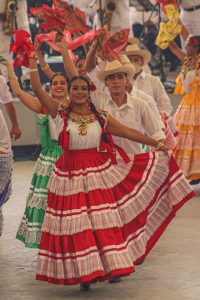 Some people associate French culture with Paris, the city of fashion, gastronomy, art and architecture par excellence. However, French culture is very broad and presents very diverse customs and traditions in each region. Therefore, if you want to know it in depth, you will have to look beyond the City of Light.
Some people associate French culture with Paris, the city of fashion, gastronomy, art and architecture par excellence. However, French culture is very broad and presents very diverse customs and traditions in each region. Therefore, if you want to know it in depth, you will have to look beyond the City of Light.
French culture is recognized worldwide for its elegance, sophistication and artistic contributions. Rooted in a fascinating history and diverse mix of influences, French culture has shaped the world of art, literature, fashion, gastronomy and more.
Historically, French culture has been influenced by the Celts, the Gallo-Romans, and the Franks, a Germanic tribe. The Gauls or Celts spread throughout Europe centuries before the arrival of the Romans. Later, during the Iron Age and Roman times, this territory was known as Gaul.
French is the official language, and according to a study published by the BBC, it is also the main language of the country’s almost 70 million inhabitants. Furthermore, French is the second most learned language in the world, according to the French Ministry of Foreign Affairs.
People living near the Italian border may speak Italian as a second language, just as people residing near the French-Spanish border speak Basque. Other languages and dialects that can be found in France are Flemish, Catalan, Breton (Celtic language), and the languages of the former French colonies.
French cuisine
Food and wine are essential at all gatherings, as there is a lot of socializing at the table, and dinners tend to last long. One of the most classic French dishes is boeuf bourguignon, a braised stew of beef, red wine, garlic, onion, and mushrooms.
French fries, also known as French fries, are not French but Belgian. The reason Americans call them by this name is because Thomas Jefferson discovered this dish on a trip to France while he was an American minister. He brought the idea to the United States.
Fashion
Paris is the home of haute couture and fashion. The French pride themselves on their sartorial elegance, effortlessly combining classic sophistication with a touch of avant-garde style. Typical French attire includes sophisticated dresses, suits, long coats, scarves and berets. The term haute (haute couture) is associated with French fashion and generally means elegant garments that are handmade or custom-made.
The gastronomic food of the French
 The gastronomic food of the French is a customary social practice that aims to celebrate the most important events in the lives of individuals and groups, such as births, marriages, birthdays, successes and reunions. It is a festive meal in which the gathered diners practice the art of good eating and good drinking. Gastronomic food emphasizes the importance of feeling comfortable together, the pleasure of tasting delicacies and drinks, and the harmony between human beings and the products of nature. Its most important elements include, among others, the following:
The gastronomic food of the French is a customary social practice that aims to celebrate the most important events in the lives of individuals and groups, such as births, marriages, birthdays, successes and reunions. It is a festive meal in which the gathered diners practice the art of good eating and good drinking. Gastronomic food emphasizes the importance of feeling comfortable together, the pleasure of tasting delicacies and drinks, and the harmony between human beings and the products of nature. Its most important elements include, among others, the following:
- A careful selection of the dishes to be prepared, choosing them from a constantly increasing recipe book.
- The purchase of quality products, preferably local, whose flavours match.
- The harmonization of delicacies with wines.
- The ornamentation of the table.
- Accompanying the consumption of dishes with specific gestures, such as smelling and tasting.
The gastronomic meal must conform to a predetermined scheme: it must begin with an appetizer and end with a glass of liquor. It must include at least four dishes: hors d’oeuvres, fish or meat accompanied by vegetables or legumes, cheese and dessert. People are recognized as gastronomes who have a deep knowledge of the culinary tradition and preserve the memory of it, ensure a living practice of gastronomic rites, and transmit them, orally or in writing, to the younger generations. Gastronomic food contributes to strengthening family and friendly ties and, on a more general level, reinforces social relations.
…
